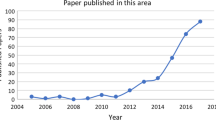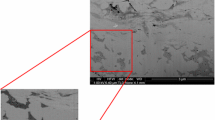Abstract
Various attempts have been made to model flow in shale gas systems. However, there is currently little consensus regarding the impact of molecular and Knudsen diffusion on flow behavior over time in such systems. Direct measurement or model-based estimation of matrix permeability for these “ultra-tight” reservoirs has proven unreliable. The composition of gas produced from tight gas and shale gas reservoirs varies with time for a variety of reasons. The cause of flowing gas compositional change typically cited is selective desorption of gases from the surface of the kerogen in the case of shale. However, other drivers for gas fractionation are important when pore throat dimensions are small enough. Pore throat diameters on the order of molecular mean free path lengths will create non-Darcy flow conditions, where permeability becomes a strong function of pressure. At the low permeabilities found in shale gas systems, the dusty-gas model for flow should be used, which couples diffusion to advective flow. In this study we implement the dusty-gas model into a fluid flow modeling tool based on the TOUGH+ family of codes. We examine the effects of Knudsen diffusion on gas composition in ultra-tight rock. We show that for very small average pore throat diameters, lighter gases are preferentially produced at concentrations significantly higher than in situ conditions. Furthermore, we illustrate a methodology which uses measurements of gas composition to more uniquely determine the permeability of tight reservoirs. We also describe how gas composition measurement could be used to identify flow boundaries in these reservoir systems. We discuss how new measurement techniques and data collection practices should be implemented in order to take advantage of this method. Our contributions include a new, fit-for-purpose numerical model based on the TOUGH+ code capable of characterizing transport effects including permeability adjustment and diffusion in micro- and nano-scale porous media.
Similar content being viewed by others
References
Bravo, M.C.: Production of Natural Gas and Fluid Flow in Tight Sand Reservoirs (DOE Publication No. DE-FG26-04NT42132). Applied Research Center, Florida International University, Miami (2006)
Chapman S., Cowling T.G.: The Mathematical Theory of Non-uniform Gases. Cambridge University Press, Cambridge (1991)
Chen N.Y., Degnan T.F., Smith C.M.: Molecular Transport and Reaction in Zeolites. Wiley, New York (1994)
Civan, F.: Effective Correlation of Apparent Gas Permeability in Tight Porous Media. Transp. Porous Med. (2008). doi:10.1007/s11242-009-9432-z
Clarkson C.R., Bustin R.M.: Binary gas adsorption/desorption isotherms: effect of moisture and coal composition upon carbon dioxide selectivity over methane. Int. J. Coal Geol. 42, 241–271 (1999)
Collins J.P.: Catalytic dehydrogenation of propane in hydrogen permselective membrane reactors. Ind. Eng. Chem. Res. 35, 4398–4405 (1996)
Corey A.T.: Measurement of water and air permeability in unsaturated soil. Soil Sci. Soc. Am. Proc. 21, 7–10 (1957)
Doronin G.G., Larkin N.A.: On dusty gas model governed by the Kuramoto-Sivashinsky equation. Comput. Appl. Math. 23(1), 67–80 (2004)
Fathi, E., Akkutlu, I.Y.: Nonlinear sorption kinetics and surface diffusion effects on gas transport in low-permeability formations. SPE paper presented at the SPE annual technical conference and exhibition, New Orleans, Louisiana, 4–7 October (2009)
Fathi M.A., Qatanani N., Barghouthi I., Khaled M.T.: Dusty gas model of flow through naturally occurring porous media. Appl. Math. Comput. 148, 809–821 (2004)
Florence, F.A., Rushing, J.A., Newsham, K.E., Blasingame, T.A.: Improved permeability prediction relations for low-permeability sands. SPE paper presented at the SPE rocky mountain oil & gas technology symposium, Denver, Colorado, 16–18 April (2007)
Freeman, C.M., Ilk, D., Moridis, G.J., Blasingame, T.A.: A numerical study of tight gas and shale gas reservoir systems. SPE paper 124961 presented at the SPE annual technical conference and exhibition, New Orleans, Louisiana, 4–9 October (2009)
Gupta V.: Evidence for single file diffusion of ethane in the molecular sieve AIPO4-5. Chem. Phys. Lett. 247, 596–600 (1995)
Harris D.C.: Quantitative Chemical Analysis. W.H. Freeman and Company, New York (1999)
Hassan, M.H.M., Way, D.: Gas Transport in microporous silica membrane. SPE paper 36226 presented at the SPE Abu Dhabi international petroleum exhibition and conference, Abu Dhabi, U.A.E., 13–16 October (1996)
Hill D.G., Nelson C.R.: Gas productive fractured shales: an overview and update. Gas TIPS 6(3), 4–13 (2000)
Ivanova E.: Ethanol vapours adsorption by natural clynoptilolite. J. Univ. Chem. Technol. Metall. 42, 391–398 (2007)
Javadpour F., Fisher D., Unsworth M.: Nanoscale gas flow in shale gas sediments. J. Can. Pet. Technol. 46(10), 55–61 (2007)
Karniadakis G.E., Beskok A.: Microflows: Fundamentals and Simulation. Springer, Berlin (2001)
Klinkenberg, L.J.: The permeability of porous media to liquid and gases. Paper presented at the API 11th mid year meeting, Tulsa, Oklahoma, May 1941; in API Drilling and Production Practice, pp. 200–213 (1941)
Mattar, L., Gault, B., Morad, K., Clarkson, C.R., Freeman, C.M., Ilk, D., Blasingame, T.A.: Production analysis and forecasting of shale gas reservoirs: case history-based approach. SPE paper 119897 presented at the SPE Shale Gas Production Conference held in Fort Worth, Texas, 16–18 November 2008
Millington, R.J., Quirk, J.P.: Permeability of porous solids. Trans. Faraday Soc. 57:1200–1207
Passey, Q.R., Bohacs, K.M., Esch, W.L., Klimentidis, R., Sinha, S.: From oil-prone source rock to gas-producing shale reservoir—geologic and petrophysical characterization of unconventional shale-gas reservoirs. SPE paper 131350 presented at the CPS/SPE internationald oil & gas conference and exhibition in China, Beijing, China, 8–10 June (2010)
Riazi C.H., Whitson M.R.: Estimating diffusion coefficients of dense fluids. Ind. Eng. Chem. Res. 32, 3081–3088 (1993)
Sadakane, M.: Molybdenum-vanadium-based molecular sieves with microchannels of seven-membered rings of corner-sharing metal oxide. octahedra. (2008). doi:10.1002/ange.200705448
Satterfield C.N., Colton C.K., Pitcher W.H.: Restricted diffusion in liquids within fine pores. AIChE J. 19(3), 628–635 (1973)
Schettler, P.D., Parmely, C.R.: Contributions to total storage capacity in devonian shales. SPE paper 23422 presented at the SPE eastern regional meeting, Lexington, Kentucky, 22–25 October 1991
Sieker, L.E.: Compositional Analysis in Pipeline Gas & NGL with Process Mass Spectrometry. ASGMT. (2007). http://www.asgmt.com/default/papers/asgmt2007/docs/013.pdf
Sumner M.E.: The Handbook of Soil Science. CRC Press, Boca Raton (2000)
Thorstenson D.C., Pollock D.W.: Gas transport in unsaturated zones: multicomponent systems and adequacy of Fick’s laws. Water Reserour. Res. 25(3), 477–507 (1989)
Tzoulaki L., Heinke D., Lim H., Li J., Olson D., Caro J., Krishna R., Chmelik C., Karger J.: Assessing surface permeabilities from transient guest profiles in nanoporous host materials. Angew. Chem. Int. Ed. 48, 3525–3528 (2009)
Veldsink J.W., van Damme R.M.J., Versteeg G.F., van Swaaij W.P.M.: The use of the dusty-gas model for the description of mass transport with chemical reaction in porous media. Chem. Eng. J. 57, 115–125 (1995)
Webb S.W., Pruess K.: The use of Fick’s law for modeling trace gas diffusion in porous media. Transp. Porous Med. 51, 327–341 (2003)
Witherspoon, P.A., Saraf, D.N.: Diffusion of Methane, Ethane, Propane, and n-Butane in Water from 25 to 43. (1965). doi:10.1021/j100895a017
Xiao J., Wei J.: Diffusion mechanism of hydrocarbons in zeolites I. Theory Chem. Eng. Sci. 47(5), 1123–1141 (1990)
Author information
Authors and Affiliations
Corresponding author
Rights and permissions
About this article
Cite this article
Freeman, C.M., Moridis, G.J. & Blasingame, T.A. A Numerical Study of Microscale Flow Behavior in Tight Gas and Shale Gas Reservoir Systems. Transp Porous Med 90, 253–268 (2011). https://doi.org/10.1007/s11242-011-9761-6
Received:
Accepted:
Published:
Issue Date:
DOI: https://doi.org/10.1007/s11242-011-9761-6




